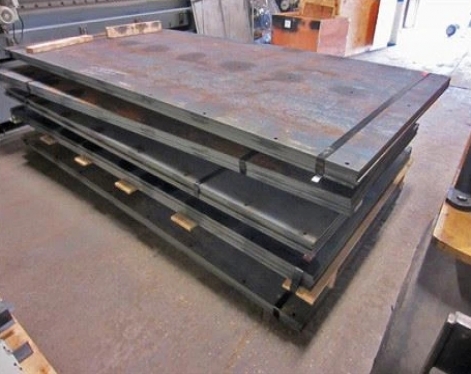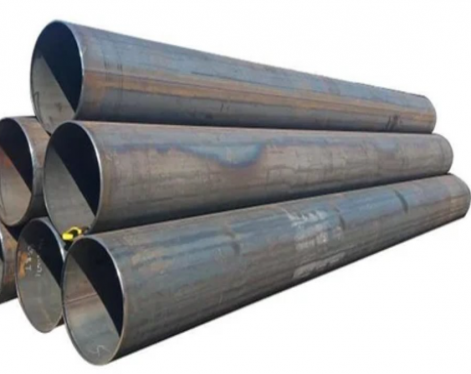Wear-resistant steel is a general term for steel materials with strong wear resistance. Wear-resistant steel is the most widely used type of wear-resistant material today. Wear-resistant steel plate is also a type of special steel.
When steel rubs against each other for a period of time, wear will occur. However, wear can be divided into two types: intentional wear and unintentional wear. Intentional wear, such as grinding, grinding, sandblasting, etc., is wear that is deliberately made based on needs. However, accidental wear can lead to damage and other conditions. Therefore, it is important to use appropriate materials to ensure that surface wear of steel does not cause damage to parts. Although steel has excellent wear resistance, not all steels have excellent wear resistance. In the market, there are several steel plates specially made to prevent wear, so they are also called wear-resistant steel plates.
Wear is one of the main forms of workpiece failure. Wear causes a large amount of energy and raw materials consumption. According to incomplete statistics, 1/3 to 1/2 of energy is consumed by friction and wear. According to estimates by the former Federal Ministry of Technology and Science of Germany, the losses caused by wear in the former Federal Republic of Germany reached 10 billion marks per year. A development plan proposed by the American Society of Mechanical Engineers (ASME) and the U.S. Energy Development Administration (ERDA) to reduce friction and wear can save the United States $16 billion per year, which is 11% of energy consumption. According to American publications, the losses caused by wear and tear in several major categories of products in the United States each year are: aircraft $13.4 billion, ships $6.4 billion, automobiles $40 billion, and cutting tools $2.8 billion. It can be seen that improving the quality of wear-resistant steel plates, developing new high-performance wear-resistant steels, and conducting extensive and in-depth research on the wear mechanism of steel materials to reduce losses caused by wear are of great significance to the development of national economic construction.
The alloying elements of wear-resistant steel are one of the reasons why it is more wear-resistant than other steels. Wear-resistant steel uses several alloys to improve wear resistance. For example, carbon helps to increase the hardness and strength of steel, and chromium and manganese can help reduce wear. Common wear-resistant steel plates are mild steel plates. Heat treatment is another factor in steel wear resistance.
Wear-resistant steel must have a microstructure that gives it high hardness. This is achieved in part by adding the appropriate alloying elements. However, this is not enough to ensure that it forms the proper microstructure. The steel must also go through a heating and rapid quenching process to form the microstructure. Care must be taken when welding and heating wear-resistant steels. If they are heated to a high enough temperature, an annealing effect may also occur, resulting in a decrease in hardness and, therefore, wear resistance.
The chemical elements commonly contained in medium and low alloy wear-resistant steels are silicon, manganese, chromium, molybdenum, vanadium, tungsten, nickel, titanium, boron, copper, rare earths, etc. Many large and medium-sized ball mill liners in the United States are made of chromium-molybdenum-silicon-manganese or chromium-molybdenum steel. Most grinding balls in the United States are made of medium and high carbon chromium-molybdenum steel. For workpieces working under abrasive wear conditions at higher temperatures (e.g. 200-500°C) or workpieces whose surfaces are subjected to higher temperatures due to frictional heat, alloy wear-resistant steels such as chromium-molybdenum-vanadium, chromium-molybdenum-vanadium-nickel or chromium-molybdenum-vanadium-tungsten can be used. After quenching, these steels have a secondary hardening effect when tempered at medium or high temperatures.
Each type of steel has a specific Brinell hardness value because hardness is one of the most important factors in improving wear resistance. Other steels may be more considered in terms of tensile strength and toughness when they are manufactured. The most common wear-resistant steel on the market is AR400. "400" indicates the Brinell hardness value. AR450 and AR500 are similar to AR400, except that they have higher Brinell hardness values. Although AR400 has a lower Brinell hardness value, it has higher formability. These three types of wear-resistant steels are mostly used in mining equipment, cement casting, molding equipment, excavation equipment, and conveyor systems.
Wear-resistant steel is widely used in mining machinery, coal mining and transportation, engineering machinery, agricultural machinery, building materials, electric machinery, railway transportation and other departments. For example, steel balls and liners of ball mills, bucket teeth and buckets of excavators, mortar walls, tooth plates and hammers of various crushers, track plates of tractors and tanks, striking plates of fan mills, railway frogs, middle groove plates, groove sides and round link chains of coal mine scraper conveyors, blades and shovel teeth of bulldozers, liners for large electric wheel buckets, roller drill bits for drilling holes in petroleum and open-pit iron mines, etc.
1. What is abrasion resistant steel plate?
When steel rubs against each other for a period of time, wear will occur. However, wear can be divided into two types: intentional wear and unintentional wear. Intentional wear, such as grinding, grinding, sandblasting, etc., is wear that is deliberately made based on needs. However, accidental wear can lead to damage and other conditions. Therefore, it is important to use appropriate materials to ensure that surface wear of steel does not cause damage to parts. Although steel has excellent wear resistance, not all steels have excellent wear resistance. In the market, there are several steel plates specially made to prevent wear, so they are also called wear-resistant steel plates.
2. Why do we need abrasion resistant (AR) & wear resistant steel plate?
Wear is one of the main forms of workpiece failure. Wear causes a large amount of energy and raw materials consumption. According to incomplete statistics, 1/3 to 1/2 of energy is consumed by friction and wear. According to estimates by the former Federal Ministry of Technology and Science of Germany, the losses caused by wear in the former Federal Republic of Germany reached 10 billion marks per year. A development plan proposed by the American Society of Mechanical Engineers (ASME) and the U.S. Energy Development Administration (ERDA) to reduce friction and wear can save the United States $16 billion per year, which is 11% of energy consumption. According to American publications, the losses caused by wear and tear in several major categories of products in the United States each year are: aircraft $13.4 billion, ships $6.4 billion, automobiles $40 billion, and cutting tools $2.8 billion. It can be seen that improving the quality of wear-resistant steel plates, developing new high-performance wear-resistant steels, and conducting extensive and in-depth research on the wear mechanism of steel materials to reduce losses caused by wear are of great significance to the development of national economic construction.

3. How do steel plates achieve wear resistance?
The alloying elements of wear-resistant steel are one of the reasons why it is more wear-resistant than other steels. Wear-resistant steel uses several alloys to improve wear resistance. For example, carbon helps to increase the hardness and strength of steel, and chromium and manganese can help reduce wear. Common wear-resistant steel plates are mild steel plates. Heat treatment is another factor in steel wear resistance.Wear-resistant steel must have a microstructure that gives it high hardness. This is achieved in part by adding the appropriate alloying elements. However, this is not enough to ensure that it forms the proper microstructure. The steel must also go through a heating and rapid quenching process to form the microstructure. Care must be taken when welding and heating wear-resistant steels. If they are heated to a high enough temperature, an annealing effect may also occur, resulting in a decrease in hardness and, therefore, wear resistance.
The chemical elements commonly contained in medium and low alloy wear-resistant steels are silicon, manganese, chromium, molybdenum, vanadium, tungsten, nickel, titanium, boron, copper, rare earths, etc. Many large and medium-sized ball mill liners in the United States are made of chromium-molybdenum-silicon-manganese or chromium-molybdenum steel. Most grinding balls in the United States are made of medium and high carbon chromium-molybdenum steel. For workpieces working under abrasive wear conditions at higher temperatures (e.g. 200-500°C) or workpieces whose surfaces are subjected to higher temperatures due to frictional heat, alloy wear-resistant steels such as chromium-molybdenum-vanadium, chromium-molybdenum-vanadium-nickel or chromium-molybdenum-vanadium-tungsten can be used. After quenching, these steels have a secondary hardening effect when tempered at medium or high temperatures.
4. What wear-resistant steels are available?
Each type of steel has a specific Brinell hardness value because hardness is one of the most important factors in improving wear resistance. Other steels may be more considered in terms of tensile strength and toughness when they are manufactured. The most common wear-resistant steel on the market is AR400. "400" indicates the Brinell hardness value. AR450 and AR500 are similar to AR400, except that they have higher Brinell hardness values. Although AR400 has a lower Brinell hardness value, it has higher formability. These three types of wear-resistant steels are mostly used in mining equipment, cement casting, molding equipment, excavation equipment, and conveyor systems.
5. What are the applications of wear-resistant steels?
Wear-resistant steel is widely used in mining machinery, coal mining and transportation, engineering machinery, agricultural machinery, building materials, electric machinery, railway transportation and other departments. For example, steel balls and liners of ball mills, bucket teeth and buckets of excavators, mortar walls, tooth plates and hammers of various crushers, track plates of tractors and tanks, striking plates of fan mills, railway frogs, middle groove plates, groove sides and round link chains of coal mine scraper conveyors, blades and shovel teeth of bulldozers, liners for large electric wheel buckets, roller drill bits for drilling holes in petroleum and open-pit iron mines, etc.
Previous:AR400 Vs AR500 Steel Plate









